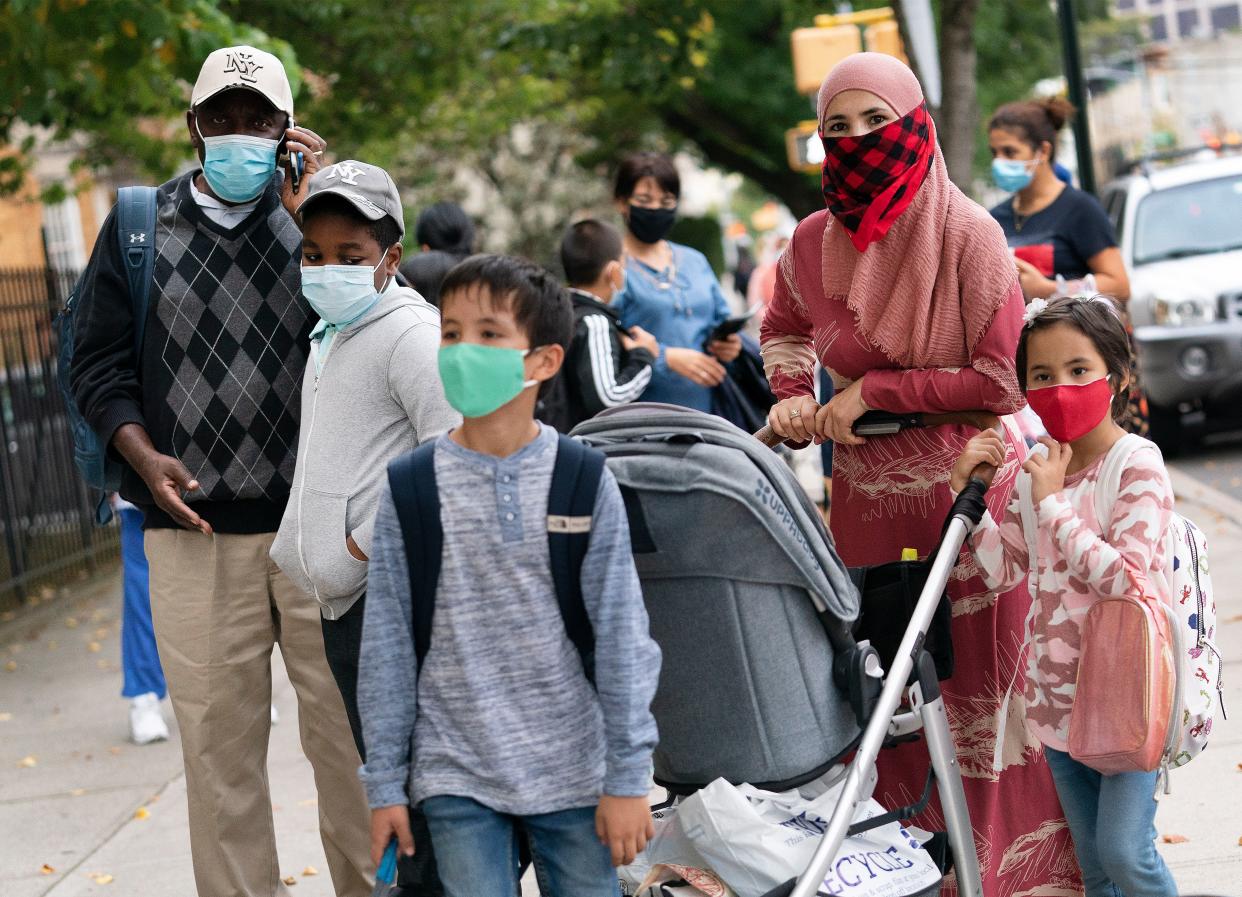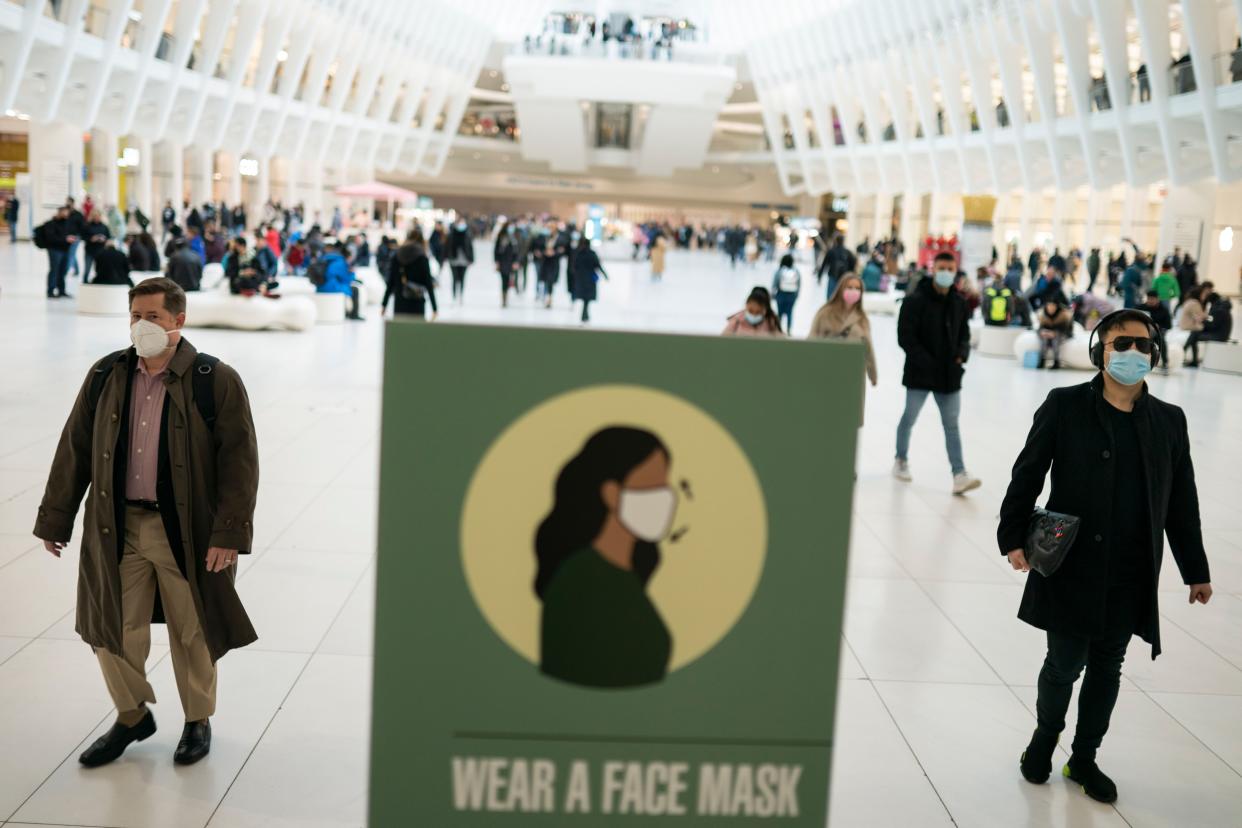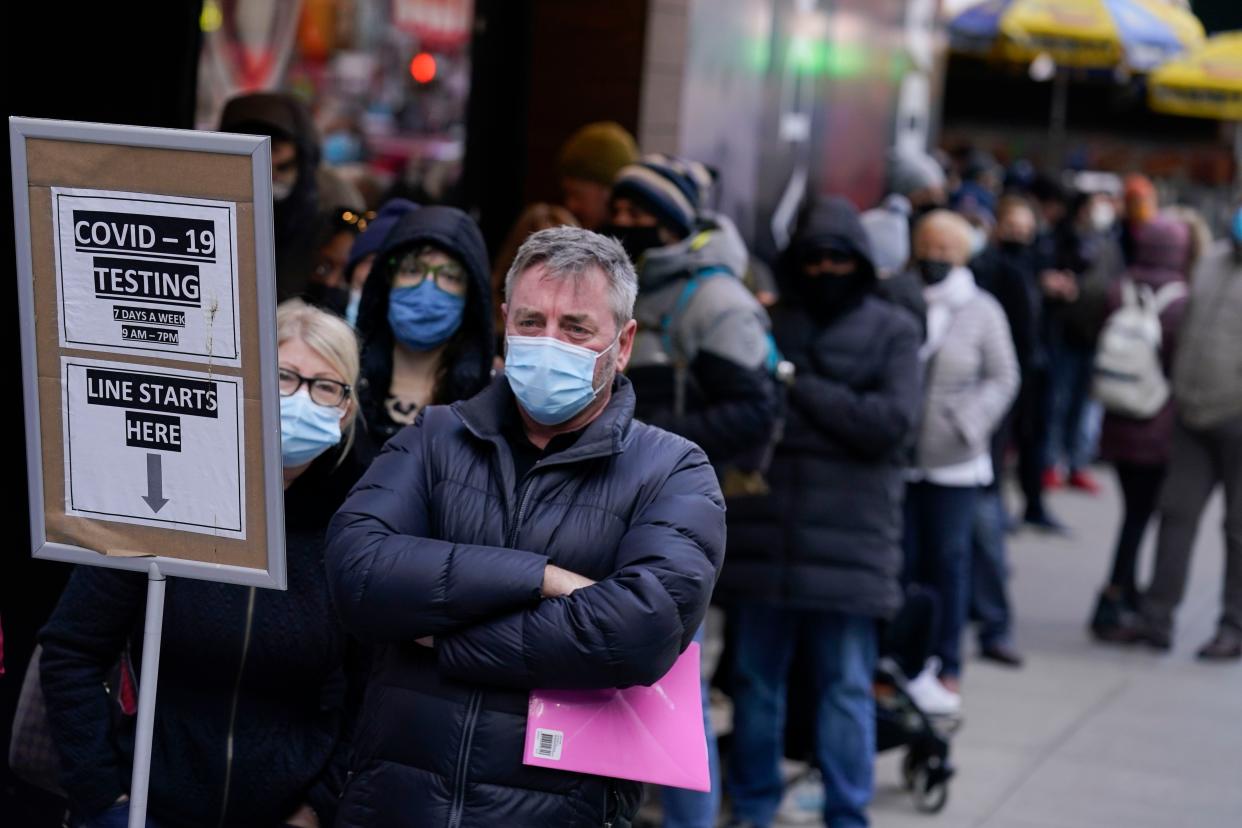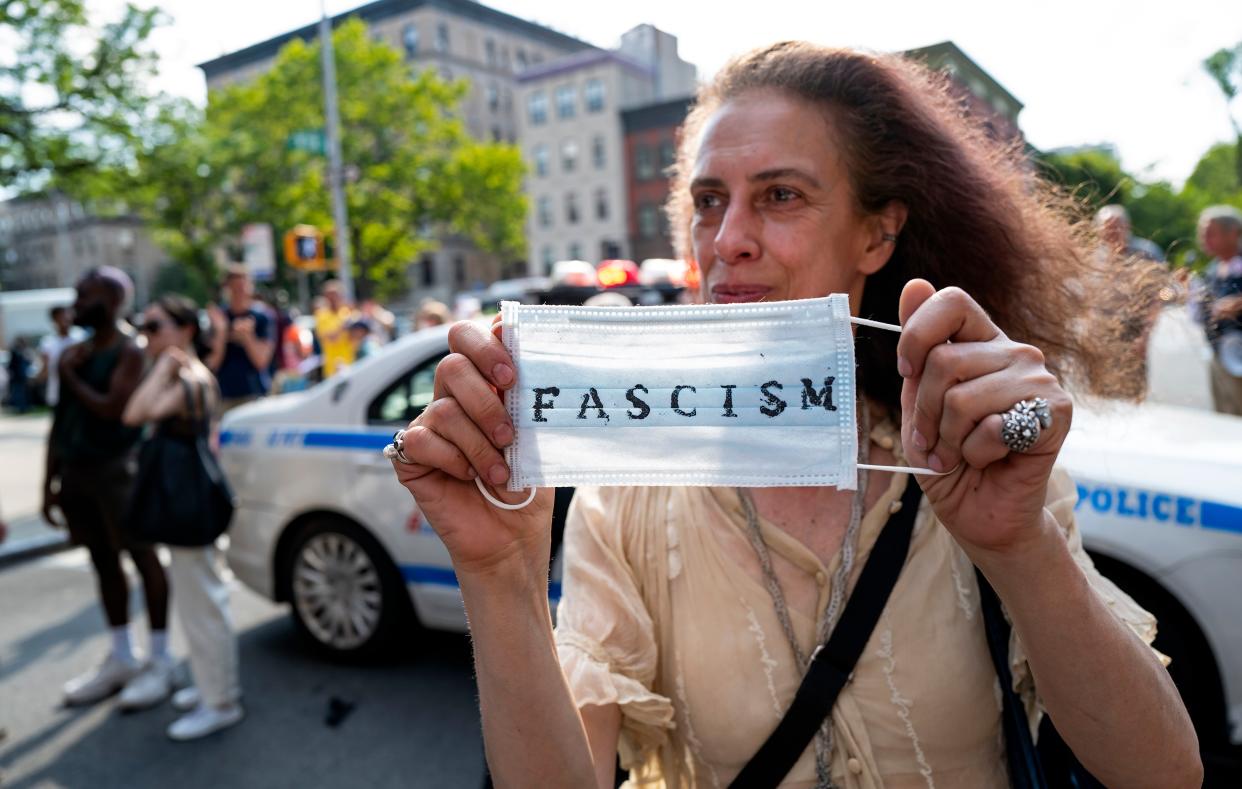A surge in NYC COVID cases sparked a red alert and a debate over masking — but are the numbers even accurate?
New data showing a surge in New York COVID cases triggered a jump in the city’s alert status and debate over how best to respond — but the actual number of infected people is likely significantly higher than official numbers show.
With a growing number of at home tests, the actual number of new cases in New York State could be up to 5 times higher than officials are reporting, data from the Institute for Health Metrics and Evaluation shows. The institute estimates that only 19% of positive COVID cases in the state are being detected.
“Right now, I think most people are missing from the data,” said Melody Goodman, a professor of biostatistics at New York University.

A family outside Public School 179 in Kensington, Brooklyn on Tuesday, Sept. 29, 2020. (Mark Lennihan/)
New York City’s recent COVID surge has sparked controversy about how officials should respond. While the city’s Commissioner of Health and Hygiene strongly recommends that New Yorkers mask up indoors, Mayor Adams has insisted that isn’t time to bring back mask or vaccine mandates.
But virus experts argue that an accurate case count is crucial to deciding the city’s response and protecting New Yorkers.
“Having the exact number is very important,” said Ali Mokdad, an epidemiologist and Chief Strategy Officer at the institute, based at the University of Washington. “We are basically flying blind because we don’t know exactly where the infections are happening, who’s been infected, who’s symptomatic, and who’s not symptomatic.”
The city’s new high alert status was triggered in part by an increase in hospitalizations, which some experts call a lagging indicator.
“By the time you get to the hospitalization rate, it’s too late,” said Tiffany Green, a population health scientist and economist at the University of Wisconsin-Madison. “It’s like saying, ‘Let’s worry about forest fires based on the smoke we see!’”

Mass transit riders wear masks as they commute in the financial district in lower Manhattan on Tuesday, April 19, 2022. (John Minchillo/)
But the explosion of at home testing means many New Yorkers are simply riding out COVID-19 at home without alerting authorities. And with so many New Yorkers using home tests, the city’s Department of Health isn’t tracking them.
“We do not report any home testing kits,” said one COVID-19 hotline operator for the Department of Health since March 2020. “If you want to be reported, go get tested at a testing site.”
Despite the underestimated counts, officials have no plans to expand home test tracking.
“The city has sufficient surveillance tools to track the trajectory of the virus even without capturing every single case,” said Patrick Gallahue, press secretary for the city’s Department of Health and Mental Hygiene.

People wait in line at a COVID-19 testing site in Times Square on Monday, Dec. 13, 2021. (Seth Wenig/)
Because vaccinated patients are less likely to develop serious illness, those who test positive at home often recover without visiting a doctor’s office. But some home test users, like Debbi Baum on the Upper West Side, are left frustrated.
“I called the Test & Trace Corps… trying to find anyone who wanted to know that I was positive for COVID,” she said. “I gave up, infuriated. Knowing how many positive cases are going unreported makes decision-making even more difficult.”
After testing positive with a home test, Matthew Mills, a TV producer, went out of his way to get an official test at CityMD.
“I remember in 2020 from our window in Brooklyn you could see temporary morgues,” he said. “I’m here for the community. I’ve seen so much selfish behavior.”
Getting an accurate case count would mean not only tracking more New Yorkers, but also a more representative sample of them, experts say. LabQ, one of the city’s most popular mobile testing clinics, has no sites in Goodman’s home turf of South Jamaica, Queens. In fact, the company has almost 14 times more locations per capita in Manhattan than in Queens, and 17 times more than in The Bronx.

An activist holds a surgical mask during a protest of a visit by first lady Jill Biden and Dr. Anthony Fauci, director of the National Institute of Allergy and Infectious Diseases, at a vaccine clinic at the Abyssinian Baptist Church, in Harlem on June 6, 2021. (Craig Ruttle/)
Even among those who can easily access testing, cases still go unreported.
“What we need is a system to encourage patients or force patients to report” home test results, said Robert Alpern, a board member of Abbott Laboratories, the company awarded $306 million by the federal government to distribute free BinaxNOW home tests in January. “The average person doesn’t think about reporting it, they’re just concerned that they have it.”
BinaxNOW launched an app for customers to report their home test results using a QR code, but the company wouldn’t share how many people actually do so. Test results are sent directly to the Centers for Disease Control and Prevention and the Department of Health and Human Services without accounting for where people live, the company’s spokesperson said.
New York’s northern counties like Erie, Niagara, and Monroe ramped up efforts to track people’s home test results. But even those cases aren’t added to the statewide count, said Samantha Fuld, a spokesperson for the New York State Department of Health.
